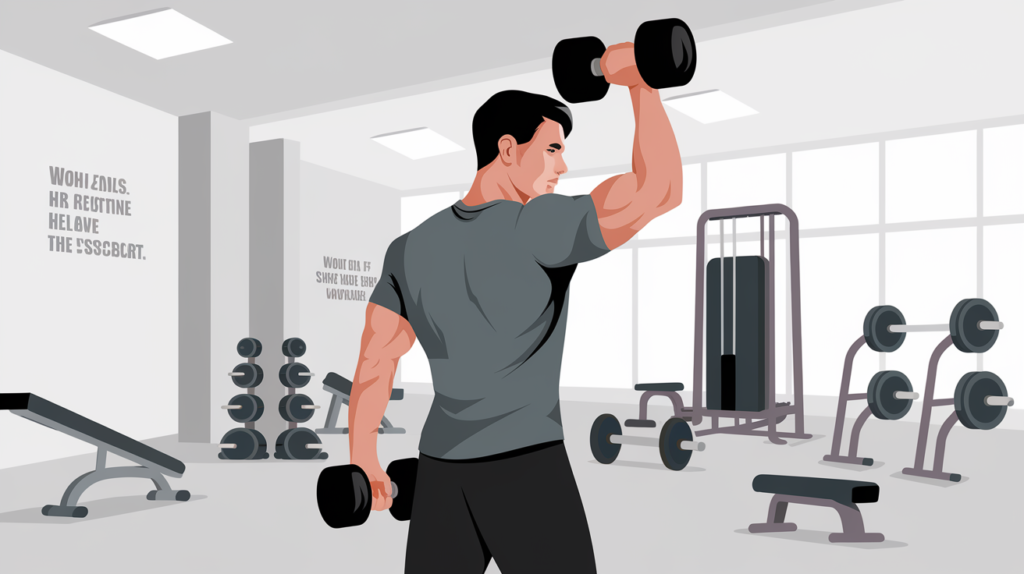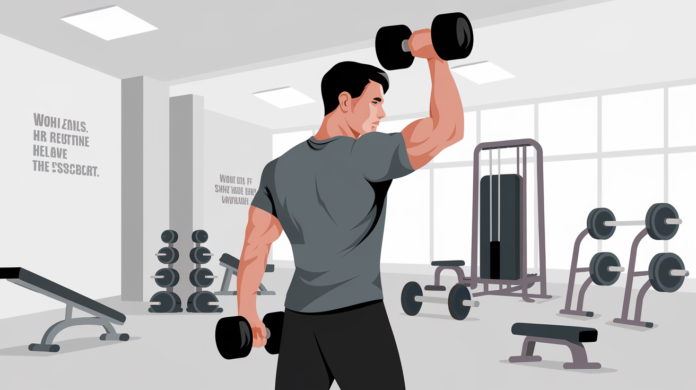There was a time when I felt like my back was my weakest link. Despite regular workouts, I struggled with poor posture, occasional back pain, and a lack of strength that affected my overall fitness. I realized that if I wanted to achieve a well-rounded, strong physique, I needed to prioritize my back muscles. Through research, trial, and error, I discovered the most effective back exercises that not only transformed my back but also enhanced my overall strength and fitness. Here’s how I built a stronger back and why these exercises should be part of your routine.
The Importance of Back Exercises

Before diving into the exercises, it’s important to understand why back training is so crucial. The muscles of the back, including the latissimus dorsi, trapezius, rhomboids, and erector spinae, play a critical role in supporting posture, facilitating movement, and providing stability to the spine. A strong back not only improves physical appearance but also helps prevent injuries, enhances performance in other exercises, and supports overall health.
Neglecting back exercises can lead to muscle imbalances, poor posture, and an increased risk of lower back pain and other injuries. By incorporating the right exercises into your routine, you can build a balanced, powerful back that supports all aspects of your fitness journey.
The Most Effective Back Exercises
After experimenting with various workouts and focusing on proper form and muscle engagement, I identified the following exercises as the most effective for building back strength and muscle definition. These exercises target different areas of the back, ensuring a comprehensive workout that hits every muscle group.
1. Deadlift
The deadlift is often hailed as the king of all exercises, and for good reason. This compound movement targets nearly every muscle in the body, with a particular emphasis on the lower back, glutes, and hamstrings. It’s one of the most effective exercises for building overall strength and power.
How to Perform the Deadlift:
- Stand with your feet shoulder-width apart, with the barbell on the floor in front of you.
- Bend at your hips and knees, keeping your back straight, and grip the barbell with your hands just outside your knees.
- Engage your core, keep your chest up, and drive through your heels to lift the barbell off the floor.
- Stand up straight, bringing the bar to hip level, then lower it back down with control.
Deadlifts helped me build a strong, stable back and significantly improved my overall strength.
2. Pull-Up
Pull-ups are a classic bodyweight exercise that primarily targets the latissimus dorsi, while also engaging the biceps, traps, and core. This exercise is incredibly effective for building upper body strength and developing a wide, V-shaped back.
How to Perform a Pull-Up:
- Grab a pull-up bar with an overhand grip, hands slightly wider than shoulder-width apart.
- Hang from the bar with your arms fully extended and your core engaged.
- Pull your body up towards the bar, leading with your chest and keeping your elbows close to your sides.
- Pause at the top, then lower yourself back down with control.
Pull-ups became a staple in my routine, helping me build a strong, defined upper back.
3. Bent-Over Row
The bent-over row is a powerful exercise for targeting the middle back, particularly the rhomboids, traps, and lats. It’s a versatile movement that can be performed with a barbell, dumbbells, or resistance bands.
How to Perform Bent-Over Rows:
- Stand with your feet shoulder-width apart, holding a barbell or dumbbells in front of you.
- Bend your knees slightly and hinge forward at the hips, keeping your back straight.
- Pull the weight towards your torso, squeezing your shoulder blades together at the top of the movement.
- Slowly lower the weight back down and repeat.
Bent-over rows helped me develop thickness in my back and improved my posture.
4. Lat Pulldown
The lat pulldown is a machine-based exercise that targets the latissimus dorsi, making it an excellent alternative to pull-ups for those who are still building strength. This exercise also engages the biceps and traps, helping to build a strong, balanced upper back.
How to Perform Lat Pulldowns:
- Sit at a lat pulldown machine and adjust the knee pad to secure your legs.
- Grab the bar with a wide overhand grip, slightly wider than shoulder-width apart.
- Start with your arms fully extended and your back straight.
- Pull the bar down towards your upper chest, leading with your elbows and focusing on engaging your lats.
- Squeeze your shoulder blades together at the bottom, then slowly return the bar to the starting position.
Lat pulldowns were instrumental in helping me build width and strength in my upper back.
5. T-Bar Row
The T-bar row is another fantastic exercise for building the middle back and improving overall back thickness. This movement allows for a greater range of motion, making it particularly effective for targeting the rhomboids, traps, and lats.
How to Perform T-Bar Rows:
- Stand with your feet shoulder-width apart and straddle the T-bar row machine or a barbell anchored in a landmine setup.
- Grab the handles with both hands, keeping your back straight and knees slightly bent.
- Pull the weight towards your chest, squeezing your shoulder blades together at the top of the movement.
- Slowly lower the weight back down and repeat.
T-bar rows helped me add size and definition to my back, making it one of my go-to exercises.
6. Face Pull
Face pulls are a great exercise for targeting the rear deltoids, traps, and upper back. This exercise is crucial for improving posture and preventing shoulder injuries, especially for those who spend a lot of time sitting or working at a desk.
How to Perform Face Pulls:
- Attach a rope handle to a high pulley on a cable machine.
- Stand facing the machine and grab the rope with both hands, palms facing each other.
- Pull the rope towards your face, leading with your elbows and focusing on squeezing your shoulder blades together.
- Pause at the top, then slowly return to the starting position.
Face pulls became a key exercise in my routine for correcting posture and building strength in my upper back.
The Transformation: How These Exercises Changed My Back and Overall Fitness
As I consistently incorporated these exercises into my routine, I noticed significant changes in my back strength, size, and definition. My posture improved, my back pain decreased, and I felt more powerful and capable in my workouts. The strength I gained from these exercises also translated into better performance in other areas, such as lifting, running, and even daily activities like carrying groceries or moving furniture.
But the benefits weren’t just physical. As my back grew stronger, so did my confidence. I felt more in control of my body, more resilient, and more motivated to continue pushing myself. The journey to a stronger back became a journey of self-discovery and empowerment.
Staying Motivated and Consistent
Consistency was key to my success. I made sure to include a variety of these exercises in my weekly routine, ensuring that I targeted all areas of my back. By mixing up the movements and adjusting the intensity, I was able to continuously challenge myself and avoid plateaus.
To stay motivated, I tracked my progress by keeping a workout journal. Seeing how much weight I was lifting, how many reps I was completing, and how my strength was improving over time kept me committed to my goals.
Encouraging Others to Prioritize Back Training
If you’re looking to build back strength, improve your posture, or enhance your overall fitness, I highly recommend incorporating these exercises into your routine. They’re effective, versatile, and can be adapted to suit any fitness level.
Start with the exercises that feel most manageable, and gradually increase the intensity as you become more comfortable with the movements. Remember to focus on maintaining proper form, as this will help you get the most out of each exercise and reduce the risk of injury.
Conclusion: Embracing the Power of Back Training
My journey with back exercises has been incredibly rewarding. What started as a way to strengthen my back has turned into a key component of my overall fitness routine, helping me build a stronger, healthier body and a renewed sense of confidence.
If you’re considering incorporating these exercises into your workouts, I encourage you to take the leap. The benefits are well worth the effort, and with consistency and dedication, you’ll be amazed at the progress you can make.
So here’s to embracing the challenge, to building strength, and to living a life of resilience and power. Your journey to a stronger, healthier back starts now, and I promise you, it’s worth every lift, pull, and row.




